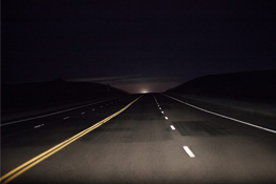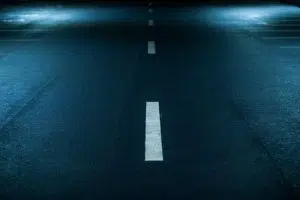
Retroreflectivity and road surface coating
 Marking road surfaces has become a standard part of road safety. It is something that is carefully considered by local Government authorities and transport departments. There has been a lot of development in road surface coating materials and techniques. Ensuring that these materials are visible in differing road conditions has been an area of concern, and as a result, there have been some highly effective developments to improve visibility. This has been of particular importance for increasing the ability of drivers at night to see important warning signs and road markings.
Marking road surfaces has become a standard part of road safety. It is something that is carefully considered by local Government authorities and transport departments. There has been a lot of development in road surface coating materials and techniques. Ensuring that these materials are visible in differing road conditions has been an area of concern, and as a result, there have been some highly effective developments to improve visibility. This has been of particular importance for increasing the ability of drivers at night to see important warning signs and road markings.
The concept of retroreflectivity is to increase the visibility of materials by enabling the rays of light from motor vehicle headlights to be reflected back at almost 180 degrees to the direction where they came from. This effect is able to be achieved by using some very simple technology – glass beads. The most common and practical use of retroreflection is for road safety at night where it is used to increase the visibility of road marking and road signs.
The retroreflective paints and road surface coating materials currently used will contain thousands of round glass beads which are bonded to the material. The glass beads are able to turn the light around so that it heads back towards the driver, which then makes the markings much easier to see.
The ability of the beads
The three elements that have the most impact on the ability of the beads to effectively reflect the light are their size, their transparency, and their roundness. Suitable levels of transparency and roundness are common for simple glass materials. Beads are relatively easy to source and the quality of their manufacture is easy to test and confirm. There has also been an alternative approach developed to provide retroreflective qualities and that is with much smaller ceramic spheres. These spheres are harder than glass beads and are highly effective in both wet and dry environments.
There are usually three different ways that beads will be applied as part of the road marking process. A very common method is that they are able to be mixed into the paint material that is going to be applied to the road surface and the equipment is able to spray them effectively during the marking process. They are also able to be added to the material after it has been applied to the road surface. This can be done by spraying or sprinkling while the road surface coating material is still wet. The third method is for them to be added when a block of thermoplastic material is being placed in the equipment to be melted. Again, the equipment has been designed to ensure that these beads are then able to be easily applied as part of the normal road marking process.
When they have been added to road marking materials, there will usually be a layer of beads that are sitting on the top surface and once the material has dried they are then locked in place. These beads will be able to retroreflect the light from head lights. The material holding the beads will act as a surface to increase the reflectivity of the interior of the bead and if a pigment has been added to the marking material then this will colour the reflected light.
Even when the material begins to be worn away as a result of traffic flow, there will continue to be glass beads on the surface of the material that will reflect light. This ensures that the markings will still be visible over the time that the markings are still on the road. There have also been developments in the technology of glass spheres and marking materials, which are also able to enhance visibility during normal daylight hours.
Criteria of using retroreflective materials
 When using retroreflective materials, there are six major criteria. The luminance is the amount of light that is directed back at the driver from the marking material. The contrast is the difference between the level of luminance and the surroundings that do not have luminance. This relates to how clearly the reflective area stands out from the background. The colour of the material may relate to standardised safety requirements, with fluorescent colours to emphasise potential danger areas and red for stopping or wrong way signs.
When using retroreflective materials, there are six major criteria. The luminance is the amount of light that is directed back at the driver from the marking material. The contrast is the difference between the level of luminance and the surroundings that do not have luminance. This relates to how clearly the reflective area stands out from the background. The colour of the material may relate to standardised safety requirements, with fluorescent colours to emphasise potential danger areas and red for stopping or wrong way signs.
The conspicuousness of the material relates to how likely it is that a driver is going to see it. This may relate to issues such as where the marking is located to enhance visibility. The legibility relates to how likely it is that a driver will be able to see the marking and understand quickly what it relates to. The visibility factor relates to how far the driver will be away from the marking before they will be able to see it clearly. This does not guarantee that the driver will be looking at the marking, so it is important that visibility is included when thinking about the placement of the marking to enhance safety.
Thermoplastics increase the life of road surface coating materials
With the use of thermoplastics, there has been an increase in the life of road marking materials. This means that they will also retain their retroreflective qualities for a longer period as well.
Part of the current thinking about effective line marking in Melbourne is to introduce wider and brighter lines that are easier to see. There need to be lines that are visible on wet roads at night time and lines that can be seen from further away, which is particularly relevant for high-speed environments or country roads with no lighting. It has been identified in studies that having a clear retroreflective line marking on open roads is able to reduce night time motor accidents. Clear centre lines and edge lines on roads are able to reduce single car accidents as well.
Contact us today
If you are considering undertaking a project using a road surface coating material, then it is important to speak to an organisation with the necessary knowledge, expertise, and practical experience that will be able to give you a range of valuable advice. This could relate to the type of material that is applied, the equipment that is used, and how best to ensure that the marking has optimum visibility to provide the most benefits.
At Mainliner we have expert staff who are able to provide you with valuable information to assist you with projects for different environments with different requirements. Contact our specialist technical advisors at (03) 9308 2732 today.


